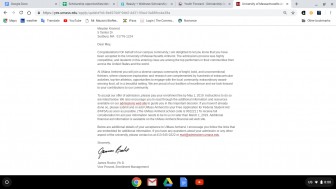
Name: Meydan Kronrod
From: Sudbury, MA
Votes: 0
Welcome to the Jungle
Driver
education is used to teach survival skills in modern society.
Education in general is used by living things to teach practical
survival skills needed to be successful in whatever environment the
animal may find itself in. Just like a jungle or a savannah, the road
has its own set of etiquettes, rules, conditions and surprises that
require educators with past experience to teach new drivers. Driver
education is crucial to continue the flow of the road and to assure
that it is suitable for both drivers and pedestrians, just as
multiple species must learn to coexist in one habitat without driving
one another to extinction.
Similarly to the way mothers begin teaching their pups at a young
age, I suggest beginning drivers ed at a younger age, for
example at 12 rather than 16 to condition children to think
critically on the road. Clearly, I do not mean having 12 year olds
operate a car on the road. I mean education such as teaching distance
prediction skills between other vehicles, learning to memorize
routes, and understanding road signs. In addition, upon completing
their driving course, students should be required to pass a test
driving in snowy weather to assure that they are capable drivers
under dangerous conditions. It is also helpful to promote courses
managing sudden dangerous situations on the road such as ice,
unpredictable turns, and abrupt stops. Finally, in many accidents
experienced elderly drivers are at fault. Offering courses to the
elderly instructing them how to operate newer vehicles can help
prevent crashes caused by unfamiliarity with a vehicle.
Although
I am considered a prudent and calm driver, about a year ago I was
driving my sisters to a doctor’s appointment and was not able to
stop on a snowy road at an intersection. I ran into a pickup truck
and my car was totalled. Despite my trauma, I must say there was
nothing I could learn from it, as one cannot learn on the spot. I
would have learned much more, and possibly avoided this accident, if
I had a hands-on lesson in safe conditions on winter driving.
Following the crash I began noticing friends and family using their
phones and driving. When I asked them why they are doing that, they
said that “there is nobody on the road!” and “everyone does
it.”
By learning from my fellow drivers’ mistakes, I concluded that I
can take my own steps to be a safer driver. For example, avoiding
driving while distracted by personal issues, illness, or exhaustion.
Also, testing my vision regularly to make sure that I can see well.
Studying my route before heading out to an unknown location, or
bringing another passenger to direct me, can prevent me constantly
glancing at the GPS. To avoid phone distractions, I can let people
know ahead of time that I am driving. Finally, as I learned from
multiple road trips, taking breaks on long drives prevents eye and
driver fatigue, both of which prevent accidents.